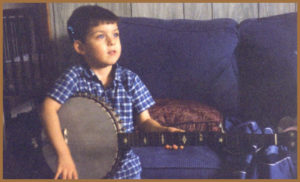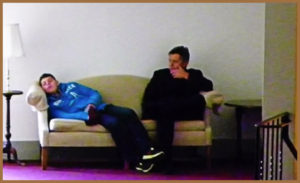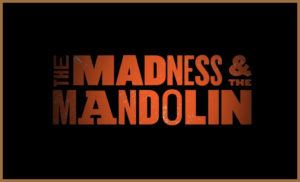In a somewhat ‘Once upon a time’ for the autistic community, the first page of Eric and Corina Gibson’s autism story begins when their averagely developing son: Kelley, suddenly hits a speed bump and falls behind his peers. It’s a familiar path, as many autistic families know. However, what comes next is anything but common – although, then again, maybe it’s TOO common. I’ll let you decide.
In this week’s sponsored post, I will be discussing Amazon’s new autism documentary The Madness & The Mandolin; examining why this silent addition to Netflix’s nemesis might just be one of the most important films you watch this year.
[As always with these promotional posts, it’s important to remember that a sponsor’s involvement has no impact on my views and, as such, you will always get my true thoughts – might I remind you of my review of Flamingo Boy!]
The Madness & The Mandolin Review:

With the sound of children playing in the background, The Madness & The Mandolin’s initial moments start with a school textbook drawing into focus. This book then splits open, revealing an all too real fact, accompanied by director Sean Ackerman’s narration stating that: ‘1 in 5 children will suffer from a severe mental health condition’.
It’s a figure that you’ve probably heard rumblings of before. Taken at its word, it means that some 14,800,000 kids currently have a mental disorder but, as plays out over the course of the 50-minute documentary, it’s context isn’t pointing out the pain these children carry but the undue suffering that occurs due to a lack of understanding & proper care.
This is the true focus of The Madness & The Mandolin, as we watch the happy Gibson family lose their son, not to autism (which they actually have an earnest positivity towards) but to a medical system that throws so many pills at a problem their, once withdrawn, musically gifted child becomes a shell of a human; unable to think, stay awake & ultimately play the music he loves so much.

This sounds rather sour, right? Like the kind of film you expect to see in a classroom or at a trial for those who unintentionally turned the son: Kelley, into the first zombie. However, The Madness & The Mandolin is actually optimistic in its underpinning of the medical institutes’ shortcomings and never coming across as preachy, being balanced to the very end.
The Madness & The Mandolin is also fun as, outside of the crushing world of mental health disorders, viewers are treated to the sounds and sights of the Gibsons’ external family: the Bluegrass community – a subset of country music which is more ‘O Brother, Where Art Thou?’ than ‘Deliverance’ (thank God!).
There’s a real camaraderie during these moments and the visuals of people, content with the simple things, makes you appreciate that mental health disorders touch all walks of life. The live music in these segments is also exceptional and worth the price of admission alone – with a cover of Johnny Cash’s Ring of Fire being a particular highlight for myself (even if it is still stuck in my head many days on).

But, The Madness & the Mandolin doesn’t just end with the deconstruction of Kelley at the hands of ill-equipped therapists and doctors. It also offers it’s 2 penneth by following Kelley’s return to the land of the living, through wellness strategies prescribed by Dr Jim Hudziak.
It’s a treatment that may come under some scrutiny – as it surrounds the idea that patients can be cured by living healthier lifestyles and enjoying the finer things in life. But it’s great to see that The Madness & The Mandolin openly admits the reality that, while these treatments may work for some, they won’t work for all (and it’s clear to see that Kelley’s days of anxiety and depression are far from over by the end).
However, this is why I wholeheartedly recommend The Madness & the Mandolin. It’s not a story of A to B. It poses questions, informs viewers and makes you think, whilst wearing a smile. I was quick to challenge the idea of a film involving autism and using the word ‘madness’ but the documentary knocked these preconceptions down. Here, madness represents the unpredictability of life, the treatment of those with conditions and the weight the world puts on someone’s condition first (the madness) and their interests second (the mandolin).
[The Madness & The Mandolin is currently available at Amazon]

Carry on the Conversation
What overly common yet under-represented aspect of autism would you like to see a greater awareness of? Let me know in the comments below. If you have, or are planning to see The Madness & The Mandolin, make sure to share your thoughts too.
As always, I can also be found on Twitter @AutismRevised and via my email: AutisticandUnapologetic@gmail.com.
If you like what you have seen on the site today, then show your support by liking the Autistic & Unapologetic Facebook page. Also, don’t forget to sign up to the Autistic & Unapologetic newsletter (found on the sidebar on laptops and underneath if you are reading this via mobile) where I share weekly updates as well as a fascinating fact I have found throughout the week.
Thank you for reading and I will see you next Saturday for more thoughts from across the spectrum.


